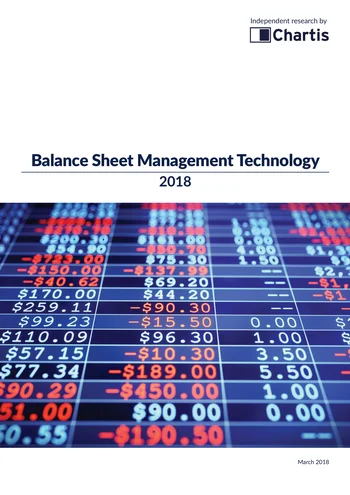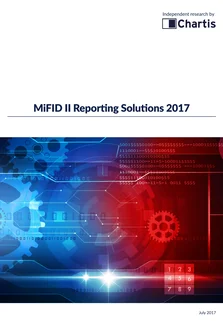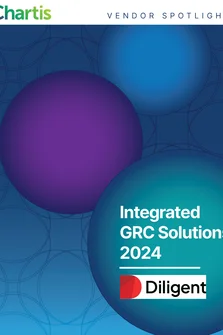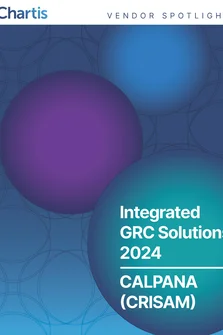Making the same mistakes?
In the wake of the financial crisis, across the spectrum of banking, insurance, capital markets and investment management, Balance Sheet Management (BSM) as a discipline has evolved rapidly. It is now a much more complex, holistic process focused around four discrete elements: capital adequacy/ solvency, leverage, liquidity and funding (see Figure 1). And, despite describing fundamentally different management objectives and regulatory concerns depending on where across the spectrum they are expressed, each of these critical ‘cogs’ in the BSM process is present, all are interconnected, and each exerts influence on the others, amplifying the inherent intricacy of modern BSM.

For the last decade, regulators have focused much of their attention on improving the measurement of risk in banks and investment firms, and the focus of Financial Institutions (FIs) – especially banks – has been on improving how they manage risk. This has involved understanding the connections they have (to clients, other parts of their business and other FIs), and determining which buffers are appropriate to absorb the volatility caused by unexpected events.
Increasingly, banks are focusing their attention on a specific challenge, namely to establish a stress- testing regime that not only embraces the scenarios set out each year by the regulators, but also takes into account the idiosyncratic nature of banks’ balance sheets and business profiles. This challenge
is amplified by two interconnected and embedded risks in banks’ balance sheets that are difficult to pinpoint, model, measure, manage and mitigate against.
The first of these is the behavior of those holding assets and liabilities; the other concerns the optionality given to customers in ‘business as usual’ conditions and in various situations of market stress (such as banking crises or other irregular circumstances). Since the crisis, regulators have moved to implement two new measures to address these risks: the Liquidity Coverage Ratio (LCR) and the Net Stable Funding Ratio (NSFR), both of which include assumptions about behavior and optionality. However, for many banks themselves, with both these risks effectively lying ‘hidden’ in their balance sheets, the threats they pose may not be fully realized.
Nevertheless, several market participants, regulators and consultants in the industry believe that other vital lessons have been learned from the crisis, and that a new set of rules finalized by the Basel Committee in December 2017 will be enough to avert or mitigate any future crisis. And yet, for a number of reasons, the reality could be very different. For example:
- A number of banks are still going through the knotty process of implementing software to help them comply with new post-crisis regulation.
- In particular, the industry is still grappling with the complexities involved in modeling stress testing, as well as the practical ramifications of the LCR and the NSFR.
- As a result, banks’ assumptions about behavior and optionality have yet to be stress-tested, and remain unobserved by some banks. Dangerously, the price of ignoring these risks may not yet be properly understood by either the banks or their customers.
The ability to identify and mitigate these risks with appropriate software solutions and management processes could emerge as a strong axis of competitive advantage. However, to seize this opportunity, institutions must first tackle the problems inherent in BSM, including the often confusing array of terms and capabilities it employs – even within the same industry vertical. Because the risks banks face tend to be the same, there is a need for a more unified approach to BSM. But the geographical differences in how regulations are applied have their own disparate effects on how BSM is developed and used.
Technology vendors, we believe, are well positioned to influence how banks respond to these challenges. Key to this, though, will be their success in identifying a clear underlying set of capabilities in BSM – what we refer to as the ‘BSM value chain’ – and the mathematical processes underpinning its analytical components. By understanding the intricacies of the value chain, banks and vendors can communicate clearly with each other, aiding the successful development of new BSM solutions. Most will continue to offer regulatory compliance modules, which are likely to be an essential part of any offering for some time. However, pressure will mount for new solution offerings to tackle the vagaries of the balance sheet, and this will become a vital area of differentiation for vendors of all stripes going forward.
This report is based on the insight and analysis of Chartis’ subject-matter experts. Note that it focuses on BSM in banks, which are experiencing substantial change in the way they manage their balance sheets.
This report uses Chartis’ FinTech Quadrant™ – as part of its supply-side analysis – to analyze the BSM market. The FinTech Quadrant™ uses a comprehensive methodology that involves in-depth independent research and a clear scoring system to explain which technology solutions meet an organization’s needs. The FinTech Quadrant™ does not simply describe one technology option as the best BSM solution; rather it has a sophisticated ranking methodology to explain which solutions are best for specific buyers, depending on their implementation strategies.
This report covers the leading vendors offering BSM solutions, including Finastra, FIS, IBM, Intellect Design, Moody’s Analytics, MORS Software, Oracle, Prometeia, QRM, Wolters Kluwer, zeb and ZM Financial Systems.
Only users who have a paid subscription or are part of a corporate subscription are able to print or copy content.
To access these options, along with all other subscription benefits, please contact info@risk.net or view our subscription options here: http://subscriptions.risk.net/subscribe
You are currently unable to print this content. Please contact info@chartis-research.com to find out more.
You are currently unable to copy this content. Please contact info@chartis-research.com to find out more.
Copyright Infopro Digital Limited. All rights reserved.
As outlined in our terms and conditions, https://www.infopro-digital.com/terms-and-conditions/subscriptions/ (point 2.4), printing is limited to a single copy.
If you would like to purchase additional rights please email info@chartis-research.com
Copyright Infopro Digital Limited. All rights reserved.
You may share this content using our article tools. As outlined in our terms and conditions, https://www.infopro-digital.com/terms-and-conditions/subscriptions/ (clause 2.4), an Authorised User may only make one copy of the materials for their own personal use. You must also comply with the restrictions in clause 2.5.
If you would like to purchase additional rights please email info@chartis-research.com





